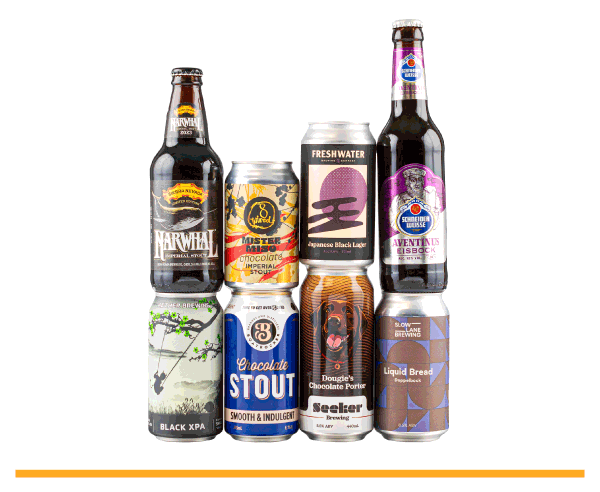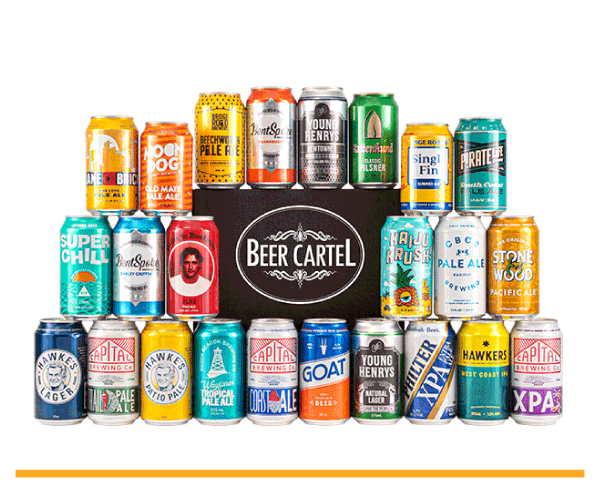Beer Storage: The Do’s and Don’ts of Storing and Cellaring Beer
24th Jun 2016
We get a lot of questions about the best way to look store craft beer, so thought we would put together this handy "how to" guide to ensure your craft beer is in the best condition possible when you decide to drink it. There are a lot of do’s and don’ts, so read on and hopefully you’ll learn a bit more about the best way to store your beer.
If you want to get to the do’s and don’ts for storing beer, simply scroll to the bottom of this page or click here. Otherwise prepare to learn about the enemies that cause beer to degrade in quality over time; light, heat and oxidation.
The Effect of Light Strike on Beer (Skunked Beer)
Light has a huge impact on the quality of beer over time and is responsible for what is known as skunked beer. Skunky beer (or light struck beer), is where a sulphur off-flavour exists, which is very similar in character to that of a skunk's natural defence (hence the name).
Skunked beer occurs when light-sensitive hops, which are the main preserving ingredient in beer, are exposed to too much light. The issue of skunked beer has been documented as far back as 1875, but it wasn’t until 2001 that chemists finally worked out the exact process as to how a beer becomes skunked.
During the research lasers were fired at three isohumulones; the molecules responsible for light sensitivity in hops. The compounds created from the process were then measured. It was found that the laser broke down the isohumulones to create 3-methylbut-2-ene-1-thiol, or “skunky thiol” a compound chemically similar to that produced by a skunk’s glands.
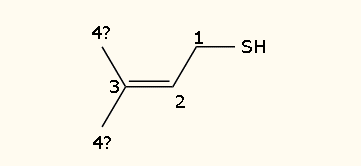
3-methyl-2-butene-1-thiol, or 3-MBT: Source of Light Struck / Skunk Flavours in Beer
Light Strike & Bottle Types
In the real world, beer is affected by light which is between 400-500 nanometers (nm) in wavelength (the blue end of the spectrum), and ultraviolet light, which has a wavelength of less than 400nm. When it comes to glass, brown bottles are able to minimise the effects of light strike by blocking out light under 500nm. Green bottles in contrast can only block light below 400nm (ultraviolet light), while clear bottles have no protection against light strike. It is for this reason that craft brewers use brown bottles as their bottle of choice during brewing, and why you may have encountered skunked beer when you have enjoyed a Corona or Heineken in the past.
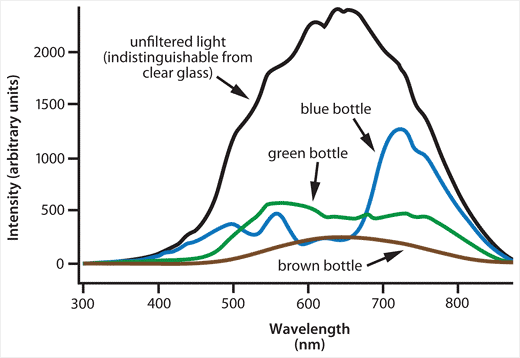
Light Absorption by Glass Colour: Brown Glass is the Winner.
Light strike is such a potent compound that even parts-per-trillion can be detected and potentially ruin a beer. It has been said that clear bottled beer can become light-struck in less than one minute in bright sun, after a few hours in diffuse daylight, and in a few days under normal fluorescent lighting. One thing to keep in mind; the natural sulphur character produced by certain lager yeasts, under certain brewing conditions, doesn’t mean the beer is skunked. This could be an intentional flavour characteristic of that style of beer.
There are a couple of different techniques that are used to skunk-proof beer in clear glass. One such method is to use a special glass that has been modified to block most of the light from reaching the beer. Another is to use a hop extract, called tetra-hops, which has light-resistant isomerized alpha acids, in place of hop flowers to bitter the beer. This hop extract is used by a number of large international breweries which sell their beer in clear glass.
The last method, which is more marketing than prevention, is used by Corona. They encourage customers to add a wedge of lemon or lime to their beer, and for the beer to be consumed directly from the narrow mouth of the bottle, thereby hiding any potential skunked aromas.
Home Experiment: Create a Skunked Beer
If you are interested in learning more about skunked beer, try the following test. Take your craft beer and pour part of it into a glass, then leave the glass in direct sunlight for fifteen to thirty minutes. Smell the beer in the glass, and compare this to the beer in the bottle that has not been exposed to light. You should notice a difference.
Light Strike & Cans
If you want to avoid the effects of light-strike altogether, however, there is one vessel that can do so: the wonderful can (aka the tinny).
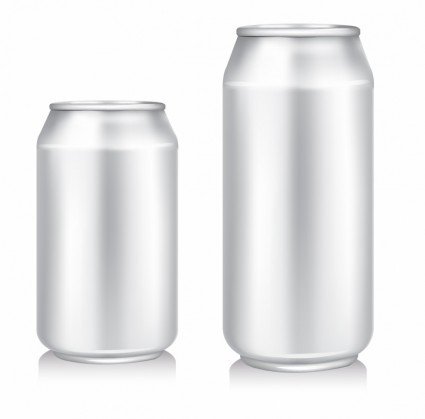
The Magical Beer Can: The Great Defender of Light Strike
The Effect of Heat on Beer
When beer undergoes the brewing process it is a living product, with yeast which is responsible for creating (fermenting) beer, active. Once the final product is created, the yeast has typically died off (except for wild ales), normally through bottle conditioning, or pasteurisation. With the fermentation process complete there are now no, or few, molecules active in the beer. Essentially it is in a state where the beer will only degrade over time.
Temperature now starts to become a factor. Heat will accelerate the chemical reaction, making the natural breakdown of large molecules into small molecules occur more rapidly. For beer, this simply means in hotter conditions, it will age faster.
Two Negative Effects of Heat
Exposure to heat can cause two negative effects within beer:
1. The production of dimethyl sulfide (DMS), which occurs at higher temperatures. DMS can add a cooked-vegetable or cooked-corn flavour and aroma to the beer. 2. The second effect is directly related to the breakdown of yeast, as a result of prolonged exposure to heat. If the beer is exposed to high temperatures and is bottle conditioned and contains residual yeast, then this yeast will begin to autolyze. Yeast autolysis produces a flavour and aroma similar to burning tire rubber.
While fluctuations in temperature are not ideal for beer, they are not disastrously harmful. A common misconception is that it is bad to re-chill a beer which has been previously refrigerated. Doing this will not significantly impact your beer in anyway. Even buying beer that is chilled and then storing it at ambient temperatures will have limited impact on the beer. While the impact from a beer cycling between chilled to ambient temperatures is low, it is the “hot” part of the cycle that will cause any damage to the flavour of the beer. A good rule of thumb is to never leave your beer anywhere that you would not leave your dog (and for the same reasons).
While chilling the beer will have no significant impact, if it is frozen it is a different story. The colder a beer becomes, the more the proteins within the beer denature, and their molecular structure begins to change. This results in a haze, known as “chill haze” or “beer haze”. It may even cause proteins to clump together, creating small flakes within the beer. This removal of proteins from the beer can cause changes to both the texture and mouthfeel of the beer, and will not reverse even as the beer is thawed.
The Effect of Oxidation on Beer
Oxidation unsurprisingly is where oxygen pickup affects the beer. The reaction will occur in beer regardless of how it is stored. As with most chemical reactions, heat and motion accelerate the oxidative process.
Oxidation in Pale Beers
The worst effects are
seen in pale-coloured beers through the formation of the trans-2-nonenal
compound. Trans-2-nonenal is classified as an aldehyde and creates flavours
similar to paper or lipstick. It has a very low flavour threshold with as
little as 0.1 parts per billion able to be identified in beer.
Trans-2-nonenal Compound
The aroma of light-coloured beers can also be influenced by oxidation. The malt
character that is originally present can become honey-like due to the formation
of 2,3-pentanedione compound. While this flavour may not be unpleasant, it is
not always a flavour characteristic that the brewer intended.
Oxidation in Dark Beers
Dark beers in contrast, tend to be affected by oxidation differently to their pale beer counterparts. As they age, the rich malt aromas and flavours are replaced by sweet, sherry-like tones. These sherry-like flavours, are primarily the result of oxidation of the malt flavour molecules in beer (melanoidins), creating the compound benzaldehyde. While the sherry-like aromas and flavours can be quite appealing, particularly amongst Belgian beers and Barley Wines, they can present the beer quite differently from its original characteristics. They are less appealing amongst lower alcohol style beers, where the sherry-like flavours can negatively affect the flavour profile of the beer. In addition the oxidation process can also influence dark beers by removing the malt flavour of the beer.
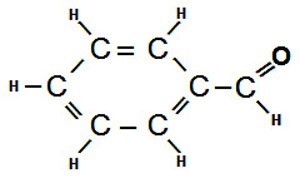
Benzaldehyde Compound
Independent of whether a beer is light or dark, the oxidative process can also lead to the development of an unpleasant metallic flavour as the beer ages.
Lastly, oxidation can create diacetyl within the beer. This is a buttery taste, formed by the oxidation of alpha acetolactate, a normal by-product of yeast metabolism. Diacetyl is one of the most commonly mentioned faults in beers due to its very distinctive flavour.
How to Minimise Oxidation
When it comes to minimising the oxidative process, it is recommended that bottles are stored upright. This is because with the bottles’ slim neck, less of the beer is exposed to the oxygen that sits between the beer and the top of the bottle (compared to lying the beer on its side). There is some debate around whether cans are significantly better at slowing the oxidation process compared to bottles. Cans have a tighter seal than bottles meaning no gases are able to get into, or escape from it. They also stop any effects from light strike. However, the surface area of the can when upright is larger than that of the bottle, which means there may be potential for the beer to oxidise slightly faster. Generally it is thought that cans are the superior vessel to bottles, with the other benefits (stopping the movement of gases and light strike), able to off-set this potential weakness.
Now that we've covered the enemies of beer let’s look at ways that we can ensure the beer is in its best possible condition for drinking:
Always Store Beer Upright
There are two main reasons for storing beer upright. The first as mentioned above is to limit the amount of beer that is exposed to oxygen, thus slowing the rate of oxidation within the beer. The second reason is related to yeast; lying a beer on its side can create a yeast ring (or water-mark) inside the bottle from the dead yeast cells, which will not settle. Storing the beer upright ensures that the yeast instead compacts to the bottom of the bottle and in doing so minimises influencing the flavour of the beer (provided that it is not poured into the glass).
There is some conjecture that beer in corked bottles should be stored on its side in a similar fashion to wine. The main theory behind this is to stop the cork from drying out (and shrinking). With today’s technology however, the cork is almost completely impenetrable to liquid. This means that the risk of the cork drying out is actually related to the external environment, due to a lack of humidity, rather than within the bottle itself.
As a result lying beer on its side will most likely be more detrimental as it exposes a greater volume of liquid to oxygen and thus to the effects of oxidation. Storing a beer on its side during long exposure to the cork can impart cork flavours within the beer. Here the alcohol in beer can draw out any mouldy, or musty characters from the cork, which can then taint the beer. Natural cork also presents further risks as it can hold fungal bacteria creating an off-flavour compound called 2,4,6, Trichloroanisole (TCA), which makes the beer devoid of taste.
The Correct Temperature for Storing Beer
As discussed earlier heat increases the rate at which beer deteriorates, so to keep beer in its best possible condition, cooler conditions are ideal. In an absolute ideal world that would mean keeping the beer refrigerated, however this is not always possible, and dependent on the beer type and seal, not always recommended, or desired.
Temperature Rules of Thumb
A good rule of thumb for the ideal storage temperature for beer, is to store the beer at, or slightly above the temperature that you would look to serve the beer. For strong beers ( Barley Wines, Tripels, Dark Ales, Imperial Stouts) this is around 12-16°C, standard ales (Pale Ales, IPAs, Lambics, Stouts etc) 10-12°C and lighter beers ( Lagers, Pilsners, Wheat beers etc) 7-10°C. Essentially the lower the alcohol, the cooler it should be stored. If you are unable to store at these exact temperatures don’t panic. As long as it is a relatively cool environment (ideally dark), and not subject to spikes in heat, the beer will be fine; it is just the speed at which it changes over time will be slightly faster.
While refrigeration of beer can be ideal, for certain styles it should be avoided. For wild/sour ales which contain live yeast, refrigeration will stop the beer evolving over time. Similarly for beers where the characteristics will change and improve over time such as Imperial Stouts and Barley Wines refrigeration will slow this development. Also for beer with a cork seal, long term refrigeration should be avoided as it will dry the cork out.
Lastly if the beer is unpasteurised and not bottle conditioned then it should be kept refrigerated at all times where possible. Here the beer has nothing to “preserve” or extend its shelf life, so will more quickly deteriorate due to oxidation if not kept refrigerated. An example of breweries in the Australian market which make beer in this way include Batch Brewing and Akasha Brewing, both located in Sydney. A number of other breweries and brew pubs which make keg only beer will also neither pasteurise or bottle condition their beer.
How Long Should Beer be Stored/Cellared for?
The duration of which a beer should be stored or cellared can vary significantly by beer type. For instance most Pale Ales and Lagers in Australia will have a 12 month recommended drinking date on them, while Sour beers, such a as those from Cantillon, and Imperial Stout , such as those from De Molen, can have up to 25 years on them. Some USA breweries have extremely short recommended drinking dates on their bottles (e.g. 3 months), but will extend these recommended drinking dates to 9-12 months for the Australian market.
Not all brewers will know how long their beers can be stored for, and the possibility can range from a few months to 25 years. Stone Brewing in the USA brew one beer, Enjoy By , that has a recommended drinking date of just one month after the beer is bottled. While the beer will be at its absolute freshest during that one month period, this “recommended drinking date” is part marketing, as it will still taste extremely good well beyond that first month. In the inverse, Stone also have their Enjoy After IPA . This is a beer that should be enjoyed after a certain date as prior to then the beer will not be fully carbonated, nor will the full effects of the wild yeast (Brettanomyces), have taken place.
The simple rule of thumb is that any beer with an alcohol percentage of 7% or less should ideally be enjoyed within one year of bottling, and preferably the fresher the better.
For beers over 7% a little experimentation can take place, particularly for those beers which are above 10%. Try cellaring a few of the same beer and drink them at different stages e.g. year 1, year 2 and so on. Take notes on each time you taste the beer looking at its flavour, aroma, mouthfeel and head quality, and see how this has changes over time. But don't forget one thing, enjoy the beer!
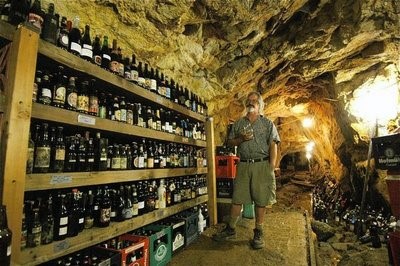
The Ultimate Beer Cellar?
The Effects of Humidity on Cellaring Beer
As mentioned earlier the ideal environment for cellaring a beer is in a cool, dark room, but what effect can humidity have on a beer?
In an overly humid environment (humidity levels above 70%) mould can develop. This may cause bottle caps to rust, labels to deteriorate and mould to attach itself to the bottle, particularly in corked beers, which can negatively influence a beers’ flavour.
In contrast; if the storage environment or cellar, has absolutely no humidity, then there is a risk that the corks in bottles may dry out and crack when opening the bottle. It is recommended that the optimal humidity for storing beer is between 50% and 70% humidity.
Never Try to Store an Opened Beer
Once a beer has been opened it’s game over, that beer needs to be drunk as soon as possible. As soon as a beer is opened it will begin to lose carbonation. Trying to drink a flat beer the day after opening will never portray the beer in its best condition. This rule applies to squealers and growlers too.
The Ultimate Do's & Don'ts of Beer Storage:
DO:
- Do buy beer in brown bottles, or even better cans, to avoid light struck
- Do store your beer in a dark environment, if it is in a box leave it in the box until you are planning to drink it
- Do always store your beer upright (old filing cabinets are great beer storage units!)
- Do store your beer in a cool place (ideally 13C or below), with low humidity
- Do drink beer not made for cellaring (Pale Ales, Golden Ales, IPAs etc) as fresh as possible
- Do refrigerate beers those that are not bottle conditioned or pasteurised
DON'T:
- Don’t buy beer in clear, or green glass bottles
- Don’t leave your beer exposed to bright light
- Don’t leave your beer exposed to heat (near the dryer is a no, no!)
- Don’t leave your beer exposed to high levels of humidity
- Don’t store your beer on its side
- Don’t refrigerate beer made to be cellared/aged
- Don’t try and store an opened beer
- Don’t store corked beer in a refrigerator for long periods of time
- Don't ever leave your beer anywhere that you would not leave your dog (i.e. not too hot!)

 Loading... Please wait...
Loading... Please wait...
